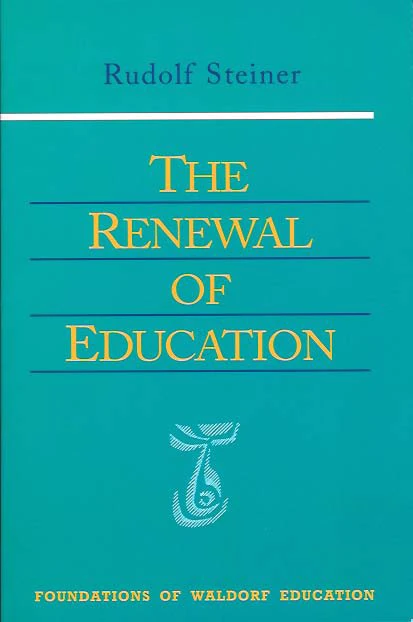The Renewal of Education
GA 301

In 1920, when these lectures were given, the Waldorf School in Stuttgart was barely eight months old, and the educational theories and methods developed by Rudolf Steiner were hardly known outside of Central Europe. Far more influential at that time—and still exerting a powerful effect on educational theories and methods to this day—were the educational philosophies of John Dewey and Maria Montessori.
| I. | Spiritual Science and Modern Education | April 20, 1920 |
| II. | Three Aspects of the Human Being | April 21, 1920 |
| III. | Understanding the Human Being: A Foundation for Education | April 22, 1920 |
| IV. | The Teacher as Sculptor of the Human Soul | April 23, 1920 |
| V. | Some Remarks About Curriculum | April 26, 1920 |
| VI. | Teaching Eurythmy, Music, Drawing, and Language | April 28, 1920 |
| VII. | The Problem of Teacher Training | April 29, 1920 |
| VIII. | Teaching Zoology and Botany to Children Nine through Twelve | May 3, 1920 |
| IX. | Dialect and Standard Language | May 4, 1920 |
| X. | Synthesis and Analysis in Human Nature and Education | May 5, 1920 |
| XI. | Rhythm in Education | May 6, 1920 |
| XII. | Teaching History and Geography | May 7, 1920 |
| XIII. | Children's Play | May 10, 1920 |
| XIV. | Further Perspectives and Answers to Questions | May 11, 1920 |
| A1. | Introduction to a Eurythmy Performance | May 15, 1920 |
| A2. | Introduction to a Eurythmy Performance | May 16, 1920 |

